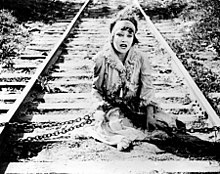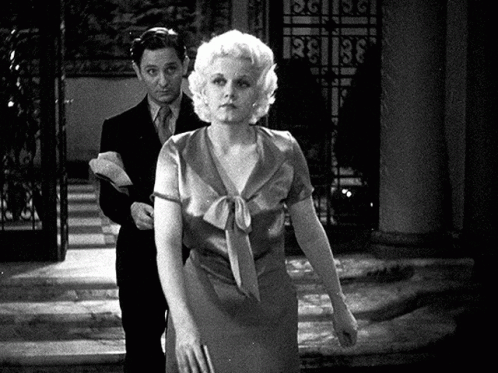|
|
Post by NoShear on Nov 6, 2023 17:24:12 GMT
I caught some of T CM's screening of When comedY was king last night and was surprised to view a seemingly fuller Gloria Swanson than the svelte starlet I think of her and wondered if starving for the camera already was a tool of the(n) trade...  Tricks of the Trade? I also wondered about the reality of the incredibly dangerous-looking stunts seen in the Keystone comedies: Gloria Swanson apparently was "frightened to death" of them!! |
|
|
|
Post by Fading Fast on Nov 7, 2023 2:19:27 GMT
To your question, I know I've read that Jean Harlow "fought" her weight for her entire too-short career. So it was definitely a thing by the 1930s.

|
|
|
|
Post by intrepid37 on Nov 7, 2023 2:42:02 GMT
To your question, I know I've read that Jean Harlow "fought" her weight for her entire too-short career. So it was definitely a thing by the 1930s.
It's always been a thing. Obesity will never be a popular preference in a leading lady. Never. |
|
|
|
Post by Andrea Doria on Nov 7, 2023 12:56:51 GMT
I think some of the leading ladies of the stage were pretty large, particularly during the Gilded Age, but that was all over by the late 1920's. Extremely slim figures and flat chests were part of the definition of a flapper.
I remember reading biographies of Frances Farmer and Gene Tierney where they mentioned being held to a certain very thin weight. Both of them felt it had led to some of their mental problems. Ginger Rogers said she wasn't supposed to go over 103 pounds and Vera Ellen said she could never be thin enough for them because she had a slight bulge at the top of her thighs (the kind of thing we have lipo for today.) Her waist was so tiny in White Christmas, it worried me and took me out of the show a few times.
|
|
|
|
Post by I Love Melvin on Nov 7, 2023 13:25:01 GMT
I think some of the leading ladies of the stage were pretty large, particularly during the Gilded Age, but that was all over by the late 1920's. Extremely slim figures and flat chests were part of the definition of a flapper.
I remember reading biographies of Frances Farmer and Gene Tierney where they mentioned being held to a certain very thin weight. Both of them felt it had led to some of their mental problems. Ginger Rogers said she wasn't supposed to go over 103 pounds and Vera Ellen said she could never be thin enough for them because she had a slight bulge at the top of her thighs (the kind of thing we have lipo for today.) Her waist was so tiny in White Christmas, it worried me and took me out of the show a few times.
Vera-Ellen in White Christmas scared me too. That waist made her look so fragile, like one wrong move could do her in. But was there another standard for chorus dancers, because I remember some of the chorines in those early Busby Berkeley movies had a little more heft (ie: were closer to a natural weight.)? Maybe the movie world didn't get to dictate to the dance world, except for the headliners who doubled as actors? And the men of the era were no ones to be setting standards for women (and I'm assuming it was the men) because the standard male body type was fairly bulky by today's standards.  |
|
|
|
Post by NoShear on Nov 8, 2023 20:21:40 GMT
I think some of the leading ladies of the stage were pretty large, particularly during the Gilded Age, but that was all over by the late 1920's. Extremely slim figures and flat chests were part of the definition of a flapper.
Whether fuller or smaller, it was interesting viewing Gloria Swanson in the early mute era which her Norma Desmond will later yearn for. |
|